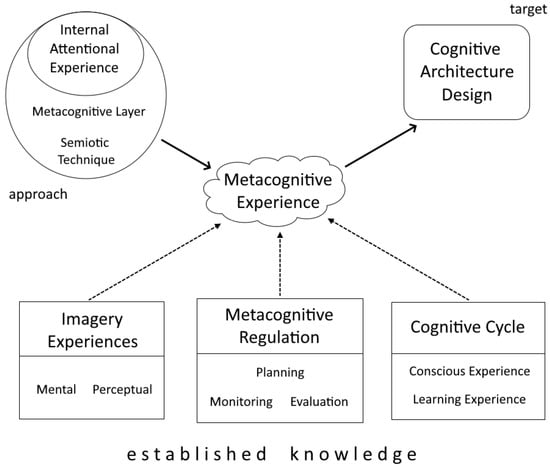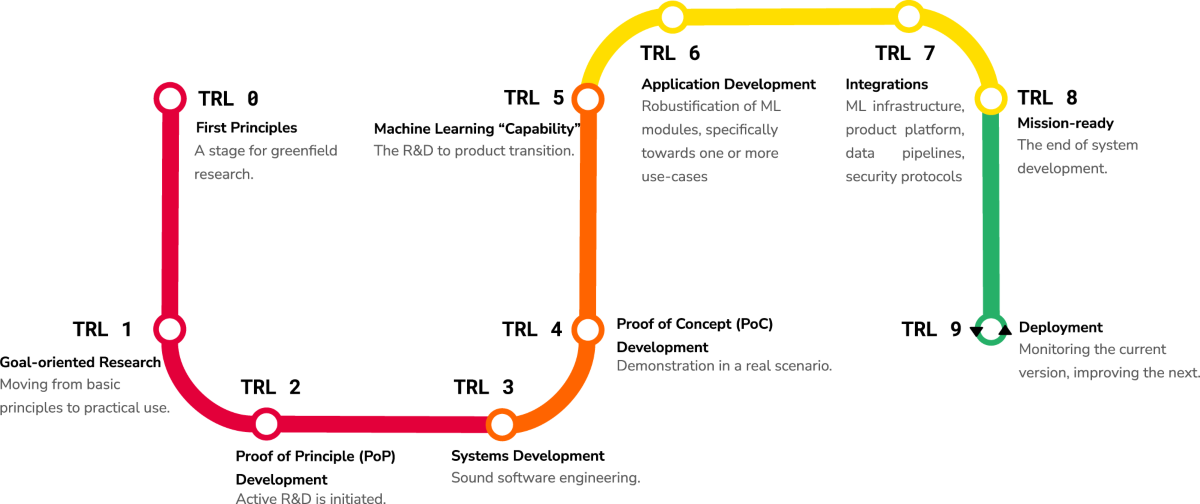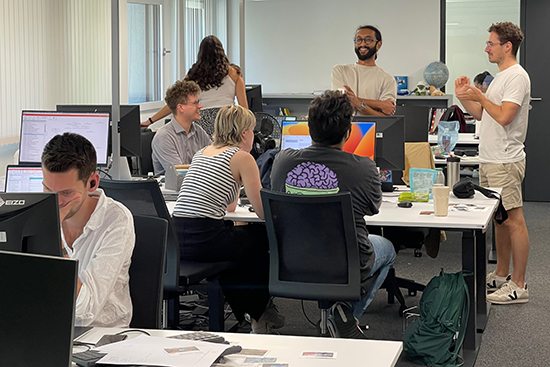The Meta-Mind Advantage
How Self-Aware AI Strategy Defines Market Leadership in 2025
The artificial intelligence landscape has reached an unprecedented inflection point. While some organizations continue treating AI as an incremental upgrade, visionary leaders are developing something far more powerful: metacognitive AI strategies that fundamentally reshape how they think about thinking with artificial intelligence. This strategic self-awareness is creating a widening gap between market leaders and followers that will define competitive advantage for years to come.
The Metacognitive Revolution: Beyond Tool-Level Thinking
Metacognition—literally "thinking about thinking"—has emerged as the defining characteristic separating AI leaders from followers in 2025. While traditional organizations approach AI implementation with surface-level strategies, leaders are developing profound self-awareness about their cognitive processes with artificial intelligence.

The fundamental shift from reactive AI usage to proactive AI orchestration represents more than technological advancement—it's a cognitive evolution. Organizations that understand and actively manage their AI thinking processes are creating sustainable competitive advantages that compound over time.
The March 2025 Inflection Point
As recent industry analysis indicates, March 2025 marked a critical divergence point between incremental and transformational AI adoption. This wasn't merely about new technology releases—it signaled the emergence of a fundamental cognitive gap between organizations operating on autopilot versus those developing strategic self-awareness.
Leaders recognized this moment as an opportunity to reimagine their operations from first principles, while followers continued treating AI as just another incremental technology upgrade. The difference in approach has created a widening chasm that will only grow more pronounced.
Cognitive Gap Visualization
The following diagram illustrates the diverging paths of metacognitive AI adoption:
flowchart TD
A[March 2025 Inflection Point] --> B[Incremental Approach]
A --> C[Transformational Approach]
B --> D[Reactive AI Usage]
B --> E[Surface-Level Strategy]
B --> F[Modest Expectations]
C --> G[Proactive AI Orchestration]
C --> H[Metacognitive Framework]
C --> I[First Principles Thinking]
D --> J[Followers]
E --> J
F --> J
G --> K[Leaders]
H --> K
I --> K
classDef leader fill:#FF8000,stroke:#333,stroke-width:2px,color:#fff
classDef follower fill:#e5e7eb,stroke:#333,stroke-width:2px
classDef inflection fill:#fef3c7,stroke:#f59e0b,stroke-width:3px
class K leader
class J follower
class A inflection
PageOn.ai's Vibe Creation capabilities enable organizations to visualize and articulate these metacognitive AI strategies, transforming abstract thinking patterns into concrete, actionable frameworks that teams can understand and implement effectively.
The Four Dividing Lines: Mapping the Leadership Landscape
First Principle Reimagination vs. Incremental Upgrades

The first dividing line separates organizations that reconstruct their operations from the ground up with AI-first thinking from those trapped in incremental upgrade cycles. Leaders approach AI agents not as enhanced software tools, but as fundamental building blocks for reimagined business processes.
The "modest expectations trap" keeps followers perpetually behind because they fail to recognize AI's transformational potential. Instead of asking "How can AI improve our existing processes?" leaders ask "If we were building this organization today with AI as a foundational capability, how would we design it?"
PageOn.ai's AI Blocks provide the perfect framework for modeling and restructuring organizational thinking patterns, enabling teams to visualize the difference between incremental improvements and fundamental reimagination.
Proactive AI Agents vs. Responsive Tools
The second dividing line represents the evolution from human-directed AI to autonomous cognitive participants. This shift fundamentally changes the relationship between humans and artificial intelligence, moving from command-and-control to collaborative partnership.
Responsive Tools (Followers)
- • Wait for human commands
- • Execute predefined tasks
- • Limited contextual awareness
- • Reactive problem-solving
Proactive Agents (Leaders)
- • Initiate sophisticated workflows
- • Anticipate organizational needs
- • Continuous learning and adaptation
- • Strategic decision participation
Knowledge work augmentation strategies that separate leaders from followers focus on creating symbiotic relationships where AI assistants become true cognitive partners rather than sophisticated calculators.
AI Evolution Maturity Model
This radar chart shows the key dimensions where leaders outperform followers:
Metacognitive Frameworks for AI Leadership
The Self-Awareness Assessment Matrix
Measuring organizational consciousness of AI decision-making processes requires sophisticated frameworks that go beyond traditional technology assessments. The metacognitive maturity model evaluates how well organizations understand their own AI thinking patterns and decision-making processes.

| Maturity Level | Characteristics | Strategic Impact |
|---|---|---|
| Reactive (Level 1) | AI decisions made without strategic framework | Limited competitive advantage |
| Aware (Level 2) | Recognition of AI decision patterns | Emerging strategic clarity |
| Strategic (Level 3) | Systematic AI thinking frameworks | Measurable competitive edge |
| Metacognitive (Level 4) | Self-improving AI strategy systems | Market leadership position |
Strategic Thinking About AI Thinking
Leaders develop meta-strategies for AI deployment that create feedback loops between AI performance and strategic refinement. This approach transforms AI from a static tool into a dynamic capability that evolves with organizational learning.
Building organizational learning systems that evolve with AI capabilities requires understanding how AI and education principles can be applied to enterprise learning. The most successful organizations treat their AI implementation as a continuous learning laboratory.
Metacognitive Feedback Loop
The continuous improvement cycle that separates leaders from followers:
flowchart LR
A[AI Strategy Deployment] --> B[Performance Monitoring]
B --> C[Metacognitive Analysis]
C --> D[Strategy Refinement]
D --> A
C --> E[Organizational Learning]
E --> F[Capability Enhancement]
F --> A
classDef strategy fill:#FF8000,stroke:#333,stroke-width:2px,color:#fff
classDef analysis fill:#42A5F5,stroke:#333,stroke-width:2px,color:#fff
classDef learning fill:#66BB6A,stroke:#333,stroke-width:2px,color:#fff
class A,D strategy
class B,C analysis
class E,F learning
PageOn.ai's structured visualization capabilities enable organizations to map their metacognitive maturity levels and identify specific blind spots in their current AI strategy and execution, creating clear pathways for strategic advancement.
The Security and Hardware Reality Check
Moving beyond chatbot-level thinking requires infrastructure-aware AI strategy that anticipates the security and hardware battlegrounds defining next-generation competitive advantage. Leaders understand that the most sophisticated AI strategies fail without robust foundational capabilities.

The security imperative has become a metacognitive differentiator because it requires organizations to think strategically about their thinking processes. Leaders don't just implement security measures—they develop security-aware AI strategies that anticipate threats and opportunities simultaneously.
Follower Security Approach
- • Reactive security measures
- • Siloed security thinking
- • Technology-first approach
- • Compliance-driven mindset
- • Limited threat anticipation
Leader Security Strategy
- • Proactive security integration
- • Holistic security ecosystem
- • Strategy-first implementation
- • Value-creation focus
- • Predictive threat modeling
Hardware and Execution Battlegrounds
Strategic foresight in hardware planning separates leaders from followers who remain focused on immediate software capabilities. The organizations building sustainable AI advantages are those investing in infrastructure that supports next-generation AI requirements before they become mainstream necessities.
This requires metacognitive awareness of how current decisions about AI virtual assistants 2025 implementations will impact future strategic options. Leaders think several moves ahead, considering how today's hardware choices enable or constrain tomorrow's AI capabilities.
Strategic Hardware Planning Timeline
How leaders anticipate and prepare for next-generation AI requirements:
PageOn.ai's Agentic capabilities excel at transforming complex security considerations into clear action plans, enabling organizations to visualize the interconnections between security, hardware, and strategic AI implementation in ways that drive better decision-making.
Building Your Metacognitive AI Advantage
Practical Implementation Strategies
Developing organizational self-reflection practices around AI usage begins with creating structured frameworks for examining how your organization thinks about AI implementation. This goes beyond technology assessment to include cognitive pattern analysis and strategic self-awareness development.

Creating Feedback Mechanisms
Effective feedback mechanisms that improve AI strategy over time require both quantitative metrics and qualitative reflection processes. Organizations must develop systems that capture not just what happened, but why decisions were made and how thinking patterns evolved.
Training teams to think strategically about their AI thinking processes involves developing metacognitive literacy—the ability to recognize, analyze, and improve cognitive patterns in AI implementation. This includes understanding how AI homework assistance principles can be applied to organizational learning and development.
Measurement and Iteration Frameworks
Strategic Indicators
- • Decision velocity
- • Strategy coherence
- • Adaptation speed
- • Innovation frequency
Operational Metrics
- • Implementation efficiency
- • Error reduction rates
- • Process optimization
- • Resource utilization
Learning Outcomes
- • Knowledge retention
- • Skill development
- • Cultural adaptation
- • Strategic alignment
Key indicators of metacognitive AI maturity include the organization's ability to predict the consequences of AI decisions, adapt strategies based on performance feedback, and maintain strategic coherence across different AI initiatives. These indicators provide early warning signals for strategic drift and opportunities for competitive advantage.
Continuous improvement cycles for AI strategy refinement must balance stability with adaptability. Organizations need frameworks that allow for strategic evolution without constant disruption, creating sustainable paths for metacognitive development.
Future-Proofing Through Strategic Self-Awareness
Preparing for the next wave of AI advancement through reflective planning requires organizations to develop adaptive capacity that responds to technological shifts while maintaining strategic coherence. This involves building organizational learning systems that can evolve with AI capabilities.
Building adaptive capacity means developing organizational reflexes that automatically trigger strategic reassessment when new AI capabilities emerge. Leaders create systems that can rapidly evaluate new technologies against existing strategic frameworks while remaining open to fundamental strategy evolution when warranted.
Adaptive Capacity Framework
The organizational capabilities that enable continuous strategic evolution:
graph TB
A[Environmental Scanning] --> B[Strategic Assessment]
B --> C[Capability Evaluation]
C --> D[Adaptation Decision]
D --> E[Implementation Planning]
E --> F[Execution Monitoring]
F --> G[Learning Integration]
G --> A
H[Metacognitive Reflection] --> B
H --> C
H --> D
H --> G
I[Organizational Memory] --> B
I --> G
classDef core fill:#FF8000,stroke:#333,stroke-width:2px,color:#fff
classDef meta fill:#42A5F5,stroke:#333,stroke-width:2px,color:#fff
classDef memory fill:#66BB6A,stroke:#333,stroke-width:2px,color:#fff
class A,B,C,D,E,F,G core
class H meta
class I memory
Using PageOn.ai to create dynamic dashboards that track metacognitive development enables organizations to visualize their strategic evolution and identify patterns in their AI thinking processes. These dashboards become strategic assets that inform future decision-making and help maintain competitive advantage through continuous metacognitive improvement.
Transform Your Visual Expressions with PageOn.ai
Ready to develop the metacognitive AI advantage that separates leaders from followers? PageOn.ai's comprehensive visualization platform helps you transform complex strategic insights into clear, actionable frameworks that drive competitive advantage.
Start Creating with PageOn.ai TodayThe Metacognitive Imperative
The organizations that will dominate the AI-driven economy of 2025 and beyond are not necessarily those with the most advanced technology, but those with the most sophisticated understanding of their own AI thinking processes. Metacognitive AI strategy represents the ultimate competitive advantage—one that compounds over time and becomes increasingly difficult for followers to replicate.
By developing frameworks for strategic self-awareness, creating feedback mechanisms that improve AI implementation over time, and building adaptive capacity for future technological shifts, organizations can establish sustainable leadership positions in an increasingly AI-driven world.
The question is no longer whether AI will transform your industry—it's whether you'll develop the metacognitive capabilities necessary to lead that transformation. The window for building this advantage is open now, but it won't remain so indefinitely. The time for metacognitive AI strategy is today.
You Might Also Like
Mastering AI Agent Tool Chains: Visual Guide to Effective Workflow Design
Explore comprehensive visualization techniques for AI agent tool chains. Learn flowcharts, mind maps, and Sankey diagrams to optimize your AI workflows with PageOn.ai's powerful tools.
MCP Implementation Roadmap Visualizer: From Concept to Enterprise Deployment
Discover comprehensive visualization strategies for MCP (Model Context Protocol) implementation roadmaps. Learn how to create effective visual guides for AI system integration across all stages.
Creating Dynamic MCP Component Diagrams: Architecture to Interactive Visualization Guide
Learn how to build interactive MCP component diagrams with this comprehensive guide covering architecture fundamentals, design best practices, and integration with PageOn.ai visualization tools.
MCP Architecture Blueprint: Essential Guide for AI Agent Builders
Discover the comprehensive Model Context Protocol (MCP) architecture blueprint for AI agent development. Learn key components, security frameworks, and implementation strategies for building robust AI systems.
